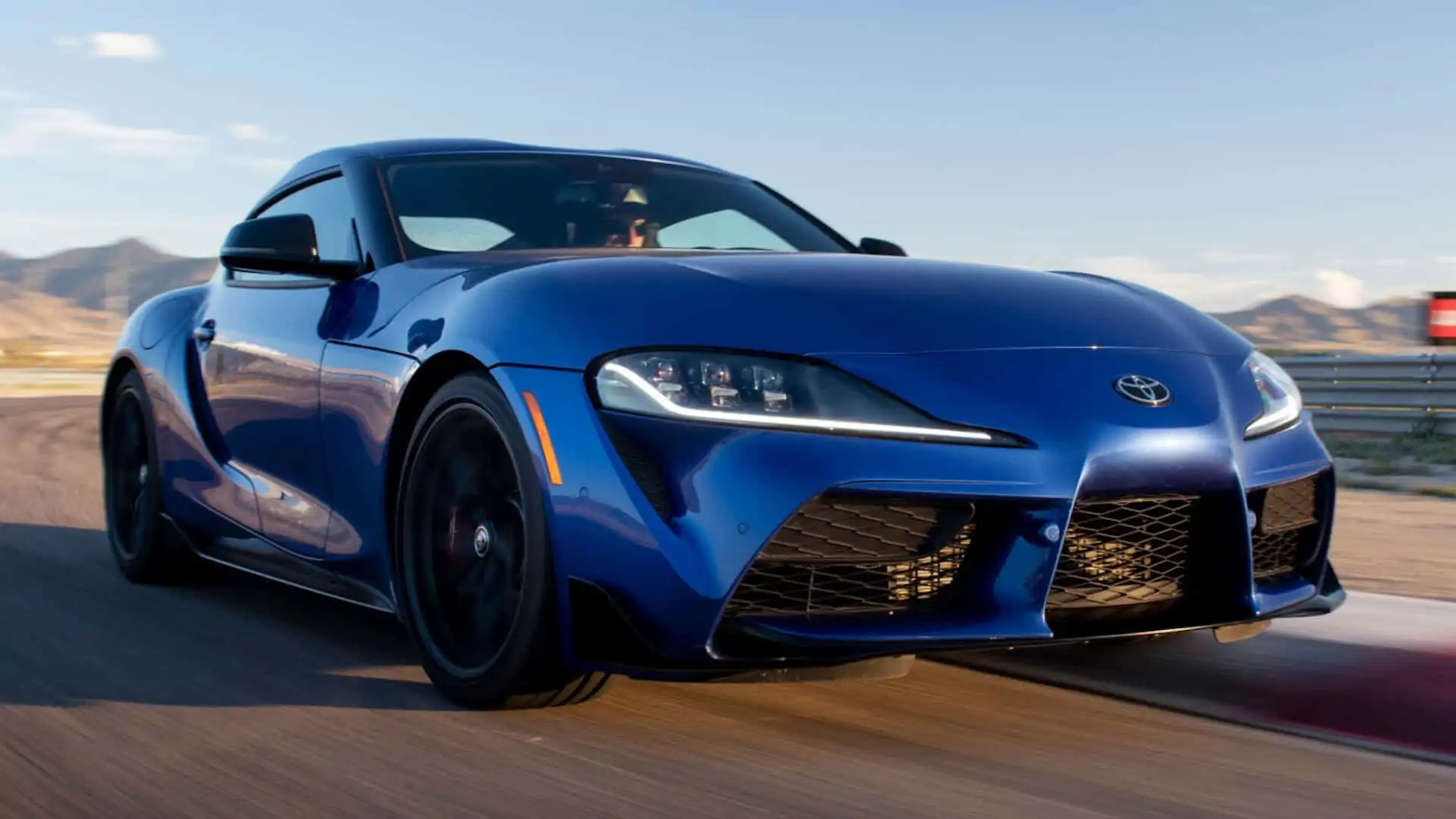When it comes to sports cars, handling is paramount. The ability to take corners with precision, respond quickly to driver inputs, and maintain stability at high speeds separates a good sports car from a great one.
In this comprehensive guide, we’ll explore some of the best-handling sports cars available today. These cars are renowned for their agility, balance, and overall driving experience, making them favorites among enthusiasts and experts alike.
What Makes a Car Handle Well?
Before diving into specific models, it’s important to understand what makes a car handle well. Several key factors contribute to superior handling:
- Weight Distribution: Even weight distribution between the front and rear axles helps maintain balance and stability, especially when cornering.
- Suspension: A well-tuned suspension system absorbs road imperfections and keeps the tires in contact with the road, enhancing grip and control.
- Steering: Precise and responsive steering allows the driver to make quick and accurate inputs, crucial for navigating tight corners and twists.
- Chassis Rigidity: A stiff chassis minimizes flex and improves the car’s responsiveness to steering inputs, contributing to a more connected driving experience.
- Tires: High-quality performance tires provide better grip, which is essential for maintaining control at high speeds and during sharp turns.
6 Top Picks Of 2024
We delved into technical specifications and performance metrics, such as acceleration, cornering ability, and braking efficiency, to identify standout models. Additionally, we analyzed feedback from car enthusiasts on forums and social media to understand real-world driving experiences.
1. 2024 Mazda MX-5 Miata
Price Range: $29,000 – $37,000
Specifications:
- Engine: 2.0-liter 4-cylinder SKYACTIV-G.
- Power Output: 181 hp.
- Transmission: 6-speed manual or 6-speed automatic.
- Top Speed: ~135 mph.
- 0-60 mph: ~6.0 seconds.
Features:
- Lightweight design (2,341 lbs curb weight).
- Near-perfect 50/50 weight distribution.
- Double-wishbone front and multi-link rear suspension.
- Electric power steering for precise control.
- Retractable fastback option for added versatility.
The Mazda MX-5 Miata is famous for its lightweight design and superb chassis tuning.

- Weight Distribution: The Miata boasts a near-perfect 50/50 weight distribution, contributing to its balanced handling.
- Suspension: Its double-wishbone front and multi-link rear suspension system provide excellent road feel and stability.
- Steering: The Miata’s electric power steering is highly responsive, offering precise control and feedback.
- Chassis: The lightweight and rigid chassis ensures minimal body roll and excellent agility.
- Driving Experience: Known for its nimble nature, the Miata excels on winding roads and tight corners, making it a favorite for both daily driving and track days.
2. 2024 Porsche 911
Price Range: $106,000 – $300,000+ (depending on trim and options).
Specifications:
- Engine: 3.0-liter twin-turbo flat-six (base model) or naturally aspirated engines (GT models).
- Power Output: 379 hp (base) to over 640 hp (Turbo S).
- Transmission: 8-speed PDK automatic or 7-speed manual.
- Top Speed: ~182 mph (base) to over 200 mph (Turbo S).
- 0-60 mph: ~4.0 seconds (base) to ~2.6 seconds (Turbo S).
Features:
- Rear-engine layout with unique weight distribution.
- Adaptive suspension management for versatile performance.
- Electro-mechanical power steering praised for feedback.
- Lightweight, rigid chassis for precise handling.
- Advanced tech like Porsche InnoDrive and active aerodynamics.
The Porsche 911 is an icon in the world of sports cars, renowned for its exceptional sporting and engineering excellence.

- Weight Distribution: The 911’s rear-engine layout provides unique weight distribution, which Porsche has fine-tuned over decades to enhance stability and traction.
- Suspension: The adaptive suspension system adjusts to road conditions, offering both comfort and performance.
- Steering: The electro-mechanical power steering is highly praised for its accuracy and feedback, making the 911 easy to control at high speeds.
- Chassis: The 911’s chassis is both lightweight and incredibly rigid, contributing to its precise handling characteristics.
- Driving Experience: Whether on the road or track, the 911 offers an exhilarating driving experience with its sharp handling and responsive nature.
3. 2024 BMW M2 Competition
Price Range: $64,195 – $66,895
Specifications:
- Engine: 3.0-liter twin-turbo inline-6.
- Power Output: 453 hp.
- Transmission: 6-speed manual or 8-speed automatic.
- Top Speed: ~177 mph (with M Driver’s Package).
- 0-60 mph: ~4.1 seconds (automatic).
Features:
- Near-perfect 50/50 weight distribution.
- Adaptive M suspension for dynamic handling.
- Electric power steering with excellent precision.
- Reinforced body and rigid chassis.
- Performance-focused tech like M Drive Modes.
The BMW M2 Competition combines power with precision, making it one of the best-handling sports cars from the German automaker.

- Weight Distribution: The M2 Competition features a near-perfect weight distribution, aiding in its balanced handling.
- Suspension: The car’s adaptive M suspension offers a perfect blend of comfort and performance, adjusting to driving conditions in real-time.
- Steering: The electric power steering provides excellent feedback and precision, making the M2 easy to maneuver at high speeds.
- Chassis: With a rigid chassis and reinforced body, the M2 maintains stability and minimizes flex during aggressive driving.
- Driving Experience: The M2 Competition is known for its agility and dynamic performance, making it a thrill to drive on both twisty roads and race tracks.
4. 2024 Lotus Elise
Price Range: $60,000 – $70,000
Specifications:
- Engine: 1.8-liter 4-cylinder supercharged.
- Power Output: 240 hp.
- Transmission: 6-speed manual.
- Top Speed: ~145 mph.
- 0-60 mph: ~4.1 seconds.
Features:
- Mid-engine layout for excellent weight distribution.
- Bonded aluminum chassis for lightweight rigidity.
- Track-tuned suspension.
- Unassisted steering for a pure driving experience.
- Minimalist interior design focused on driver engagement.
The Lotus Elise is a lightweight sports car that prioritizes handling and driver engagement above all else.

- Weight Distribution: With its mid-engine layout, the Elise offers excellent balance and weight distribution.
- Suspension: The Elise features a track-tuned suspension that provides exceptional road feedback and control.
- Steering: The unassisted steering is highly responsive, offering direct feedback and a pure driving experience.
- Chassis: The Elise’s bonded aluminum chassis is both lightweight and incredibly stiff, enhancing its handling capabilities.
- Driving Experience: The Elise is a purist’s dream, offering unparalleled handling and a direct connection between driver and machine. It excels in agility and cornering, making it a perfect choice for track enthusiasts.
5. 2024 Chevrolet Corvette C8
Price Range: $66,300 – $85,000 (Z51 Performance Package optional).
Specifications:
- Engine: 6.2-liter LT2 V8 (mid-engine layout).
- Power Output: 490 hp (495 hp with Z51 package).
- Transmission: 8-speed dual-clutch automatic.
- Top Speed: ~194 mph.
- 0-60 mph: ~2.9 seconds (with Z51 package).
Features:
- Mid-engine design for optimal balance.
- Adjustable suspension with Magnetic Ride Control.
- Electric power steering for sharp responsiveness.
- Lightweight and rigid chassis.
- Advanced tech like Performance Traction Management.
The mid-engine Chevrolet Corvette C8 represents a significant shift in design for the iconic American sports car, enhancing its handling capabilities.

- Weight Distribution: The mid-engine layout provides a lower center of gravity and better weight distribution, improving handling and stability.
- Suspension: The Corvette’s adjustable suspension system offers a range of settings to suit different driving conditions and preferences.
- Steering: The electric power steering is precise and responsive, providing excellent feedback and control.
- Chassis: The C8’s chassis is both lightweight and rigid, contributing to its sharp handling and responsiveness.
- Driving Experience: The Corvette C8 offers exceptional handling characteristics, combining American muscle with the precision of a mid-engine sports car. It’s a joy to drive on both the road and track.
6. 2024 Toyota GR Supra
Price Range: $45,000 – $58,000
Specifications:
- Engine: 2.0-liter turbo inline-4 (base) or 3.0-liter turbo inline-6 (premium trims).
- Power Output: 255 hp (2.0L) or 382 hp (3.0L).
- Transmission: 6-speed manual (3.0L) or 8-speed automatic.
- Top Speed: ~155 mph.
- 0-60 mph: ~5.0 seconds (2.0L); ~3.9 seconds (3.0L).
Features:
- Near 50/50 weight distribution.
- Adaptive suspension for versatile driving.
- Electric power steering with accurate feedback.
- Low center of gravity for enhanced cornering.
- Joint engineering with BMW for refined performance.
The Toyota GR Supra, developed in collaboration with BMW, combines Japanese reliability with German engineering to deliver exceptional handling.

- Weight Distribution: The GR Supra’s near 50/50 weight distribution ensures balanced handling and stability.
- Suspension: The adaptive suspension system provides a smooth ride on rough roads and excellent performance on the track.
- Steering: The electric power steering is responsive and accurate, offering good feedback to the driver.
- Chassis: The rigid chassis and low center of gravity enhance the Supra’s agility and cornering capabilities.
- Driving Experience: The GR Supra is praised for its sharp handling and engaging driving experience. It excels in providing a sporty yet comfortable ride.
Key Considerations
1. Purpose and Usage
Determine what you primarily want the car for. If it’s for daily driving with occasional spirited driving, you might prioritize comfort and practicality alongside handling. For track days and performance driving, a more focused sports car with minimal compromises on performance would be ideal.
2. Maintenance and Running Costs
High-performance sports cars often come with higher maintenance costs. Ensure you are prepared for potential expenses related to servicing, parts, and tires.
3. Comfort and Practicality
While handling is a top priority, consider comfort and practicality. Some sports cars offer a good balance, making them suitable for both daily driving and performance.
4. Reliability
Reliability is crucial when investing in a high-performance sports car. Research the car’s track record for common issues and choose models known for their dependability.
5. Resale Value
Sports cars can depreciate quickly, but some models hold their value better than others. Consider the car’s potential resale value when making your decision.
Tips for Enhancing Handling
If you already own a sports car and want to improve its handling, here are some tips:
- Tire Upgrade: High-performance tires can significantly improve grip and handling. Consider upgrading to tires designed for better performance.
- Suspension Tuning: Aftermarket suspension components like coilovers, sway bars, and strut braces can enhance handling and stability.
- Weight Reduction: Reducing the car’s weight can improve agility and responsiveness. Consider lightweight components or removing unnecessary items from the car.
- Chassis Stiffening: Adding components like roll cages or additional bracing can increase chassis rigidity and improve handling.
- Brake Upgrades: High-performance brake pads, rotors, and fluid can improve braking performance and stability during aggressive driving.
Driving a car with exceptional handling is a unique and exhilarating experience. The connection between the driver and the road, the precision of steering inputs, and the confidence-inspiring stability through corners all contribute to the joy of driving.
Whether on a winding mountain road, a tight city street, or a dedicated racetrack, a well-handling sports car makes every drive an adventure.
Conclusion
Choosing a sports car with excellent handling involves balancing several factors, including weight distribution, suspension setup, steering precision, chassis rigidity, and tire quality. If you already own a sports car and wish to improve its handling, upgrades to tires, suspension, weight reduction, chassis stiffening, and brakes can make a significant difference.
Ultimately, the thrill of driving a well-handling sports car lies in the perfect harmony between man and machine, where every twist and turn becomes a symphony of precision and control.




